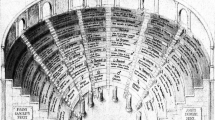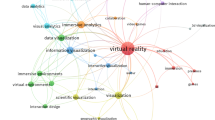Abstract
Space stations, Moon bases and Mars bases are artificial habitats intended to support human life in extreme conditions. Their purpose is to pursue human progress and to gain knowledge and experience of the environment surrounding our planet. This research focuses on visual investigation in order to improve interface design in space habitat interiors. The subject of this article is why the visual interface (as created through color, light, and artistic and natural visual inputs) is to be considered as fundamental for user reliability in isolated space habitats. The aim is to improve the quality of living conditions in today’s International Space Station (ISS) and in future long-term missions to Mars but also in more immediate prospects such as Space tourism. Taking into account experiences from an internship in Thales Alenia Space, ESA Space Habitat Workshops and PhD studies on Space Habitability, the authors’ purpose is to enhance the development of concepts and projects on spacecraft visual interface with an ergonomic approach. The main topics in this paper are the following: (1) Visual needs in Space habitat interiors. (2) Sight modification in Space environment. (3) Design: Project Requirements for Outer Space. (4) Moon Base Design.













Similar content being viewed by others
Notes
Visual perceptions are movements, shapes and colors “caused by certain quality of light that the eye recognizes and the brain interprets”. Therefore light and color are inseparable elements, and, “in the design of human habitat, equal attention must be devoted to their psychological, physiological, visual, aesthetical, and technical aspects” [17].
Approximately 80% of the sensorial information about the world is of a visual kind, 1/3 of the brain function is dedicated to visual information elaboration and in details 83% of our memory is visual [26].
“One of the most startling conclusion to emerge over the past 40 years is that approximately 50% of the cerebral cortex of the machaque monkey is devoted to vision; the estimate percentage in human is slightly smaller” [15].
An anomaloscope is an instrument used to test for color blindness. It is able to detect whether a person is a dichromat or a tritanope. The apparatus was invented by the German ophthalmologist and physiologist Willibald A. Nagel (1870–1911) who named it "anomaloskop" in 1907 [21].
Fine art or creative art has the aim to engage the astronauts’ aesthetic sensibilities.
Note: Considering the extreme human capability to adjust its own ritual behavior in relation to new environments, new approaches will be developed, moon life will have different rituals. To design a moon habitat, the every-day-life habit will have to be completely reconsidered how can it be the meal ritual in 1/6 g, sleeping, using the toilet ?… Which social play may be developed to increase crew motivation?.
References
AA, VV, Nasa (July 1995) Man System Integration Standards, NASA-Std-3000, revision B, Paragraph 8.6.2.2 Visual Design Considerations, Volume I. Houston, Usa: Nasa Johnson Space Center. Retrieved May 24, 2007, from http://msis.jsc.nasa.gov/
Aguzzi M, Häuplik S (2006) Design strategies for sustainable and adaptable lunar base architecture. IAC-06- D4.1.03, Paper presented at the meeting of the International Astrophysical Conference, Valencia, Spain, p 4
Birren F (1978) Color and human response. Wiley, USA
Bretania G (2003) Vivere nello spazio abitato. Laboratorio Colore, Politecnico di Milano, Milan, Italy. Mimeography
Burzio L (2001) Abitare lo spazio: user needs and user orientation. Unpublished master thesis, Politecnico di Torino, Italy
Clément G, Lathan C, Lockerd A (2008) Perception of depth in microgravity during parabolic flight. Acta Astronautica 63(7–10):828–832. October–November 2008. On line on www.sciencedirect.com
Connors M, Harrison A, Akins F (1985) Living aloft: human requirements for extended spaceflight, cap: 2–3. NASA, USA
Courtland R (2008) Zero-gravity may make astronauts dangerous drivers. New scientist on line article 22 September 2008. Retrieved the 1st. September 2009 from http://www.newscientist.com/article/dn14779-zerogravity-may-make-astronauts-dangerous-drivers-.html
Déribéré M (1968) Dipingere la casa. Zanichelli, Bologna, Italy
ESA (2008) Space engineering: human factors engineering. European cooperation for space standardization, ECSS-E-ST-10–11C. (former convenor of this document is Enrico Gaia) ESA-ESTEC. Nordwijk, The Netherlands
Imhof B, Mohanty S, Adams C, Hauplik S, Stiefel H, Fairburn S (2004) Musings towards a new genre in space architecture. Bundeskanzleramt, Wien
Jones EM (2009) One small step. Apollo 11 Lunar Surface Journal. USA: NASA Jonson Space Center. Retrieved 1st September 2009 from http://www.hq.nasa.gov/alsj/a11/a11.step.html
Kitayev-Smyk LA (1963) Study of achromatic and chromatic visual sensitivity during short periods of weightlessness. NASA, Center of aerospace information, Hanover
Kanas N, Manzey D (2003) Space psychology and psychiatry. Microcosm, California
Kosslyn SM, Osherson DN (1995) Visual cognition, vol II. Massachusetts Institute of Technology, Cambridge
Kravkov (1952) Color vision. Moscow
Mahnke F (1987) Color and light in Man-made environments. Van Nostrand Reinhold, New York; paperback 1993
Mahnke F (1996) Color, environment and human response. Van Nostrand Reinhold, New York
Mallove (2001) LIFTOFF TODAY? Shuttle mission to explore space motion sickness. MIT News Office at the Massachusetts Institute of Technology, Cambridge, Mass. Retrieved July 2007 from http://web.mit.edu/newsoffice/tt/1991/may22/24740.html
Messerschmid E et al (2009) SSDW 2009 final report. IRS workshop report. Institute of Space Systems, Universität Stuttgart, Stuttgart
Nagel WA (1907) Zwei Apparate für die Augenärzliche Funktionsprüfung. Adaptometer und kleines Spektralphotometer (Anomaloskop). Zeitschrift für Augenheilkunde 17:201–222
NASA (2010) Human integration design handbook (HIDH). NASA/SP-2010–3407. National Aeronautics and Space Administration, Washington, DC
NASA (1995) International space station flight crew integration standard (SSP-50005 Revision B NASA-STD-3000/T). National Aeronautics and Space Administration, Space Station Program Office, Johnson Space Center, Houston, Texas
Ono A, Schlacht IL (2007) Lunar Zen garden. Natural design as a key for reliability IAC-07-A1.I.05. Papers on DVD. India: International Astronautical Congress (IAC)
Rita L (2000) Ambienti confinati, Newton Artiche
Romanello I (2002) Il colore: espressione e funzione. Hoepli, Milano, Italy
Schlacht IL, Rötting M, Masali M (2008) Habitability in extreme environment. Visual design for living in outer space. 54.GfA, Kongress der Gesellschaft für Arbeitswissenschaft, pp 873–876. GfA Press, Dortmund
Schlacht IL, Rötting M, Masali M, Micheletti Cremasco M (2009) Human factors in space mission. (Abstract p 154, Manuscript-DVD, pp 321–325) In: Antje L, Christian S, Caroline C (eds) 8. Berliner Werkstatt Mensch-Maschine-Systeme: Band 26. Der Mensch im Mittelpunkt technischer Systeme. ZMMS Spektrum. VDI Verlag, Dusserldorf
Schlacht IL, Brambillasca S, Birke H (2009) Color perception in microgravity conditions: the rsults of CROMOS parabolic flight experiment. In: Microgravity-Science and Technology Journal, Springer, 21 Nr. 1, (pp 21–32) (ISSN Print: 0938-0108, Electronic: 1875-0494) (Pdf on line: www.springerlink.com)
Schlacht IL, Masali M, Ferrino M, Rötting M, Riccò D (2008) Visual stimuli for outer space habitability. IAC-08–E5.I.1 Papers on DVD. IAC, UK
Schlacht IL (2006) Color design requirement in microgravity long duration mission. Proceeding of International Astronautial Congress (Paper-Nr: IAC-06-A1.P.1.06)
Serlenga S (2001) Studio dell’abitabilità del modulo HAB della Stazione Spaziale internazionale. Unpublished master thesis, Politecnico di Milano, Italy
White WJ (April 1965) Effect of transient weightlessness on brightness discrimination, aerospace medicine, pp 327–331
Wise B, Wise J (August 1988) The human factors of colors in environmental design: a critical review (Contractor Report 177498). Department of Psychology, University of Washington, Seattle, Washington
Additional reading
Aoki H, Ohno R, Yamaguchi T (2005) The effect of the configuration and the interior design of a virtual weightless space station on human spatial orientation. Acta Aeronautica 56:1005–1016
De Grandis L (1996) Teoria e uso del color. Mondadori, Milano, Italy
Durao MJ (2002) Color in space architecture AIAA 2002-6107. Houston, Texas, USA
Flaborea M (2002–2003) Sistema a luce dinamica per l’illuminazione ambientale della stazione spaziale internazionale. Politecnico di Milano, Milan, Italy
Itten J (1965) Arte del colore. Il Saggiatore, Milan, Italy
NASA (2001) International space station interior color scheme (SSP 50008 Revision C). National Aeronautics and Space Administration, Space Station Program Office, Johnson Space Center, Houston, Texas
Schlacht IL, Argenta M, Bandini Buti L, Chi YK, Ferrino M, Gazzano N, Masali M, Ono A, Rubano F, Ligabue Stricker F, Rötting M. Holistic human factors in space missions. Aesthetic Pleasure, Instinct and Culture for the Design of Life Quality in Space. International Conference on Environmental System Journal. AIAA2010 July Bercelona. Manuscript ID: 754269.R2
Schlacht IL, Ono A (2009) Creative processs to improve astronaut reliability. Proceeding of 60th international astronautial congress, 12–16.10.2009, Daejeon, Republic of Korea (Paper-Nr: IAC-09.B3.2.4) (Presentation, Abstract and Paper on line: www.iafastro.net/download/congress/IAC-09/DVD/full/)
Schlacht IL, Rötting M, Masali M (2008) Habitability in extreme environment. Visual design for living in outer space. Doctoral workshop, pp 873–876. Proceedings of 54.GfA. GfA press, Dortmund, Germany
Wright FL (1987) Modern architecture, being the kahn lectures for 1930, by Frank Lloyd Wright. Southern Illinois University press Carbondale and Edwardsville, United States
Wright FL (1955) The future of architecture. The architectural press London. Horizon Press Inc, United States
Author information
Authors and Affiliations
Corresponding author
Rights and permissions
About this article
Cite this article
Schlacht, I.L., Birke, H. Space design. Pers Ubiquit Comput 15, 497–509 (2011). https://doi.org/10.1007/s00779-010-0326-4
Received:
Accepted:
Published:
Issue Date:
DOI: https://doi.org/10.1007/s00779-010-0326-4




